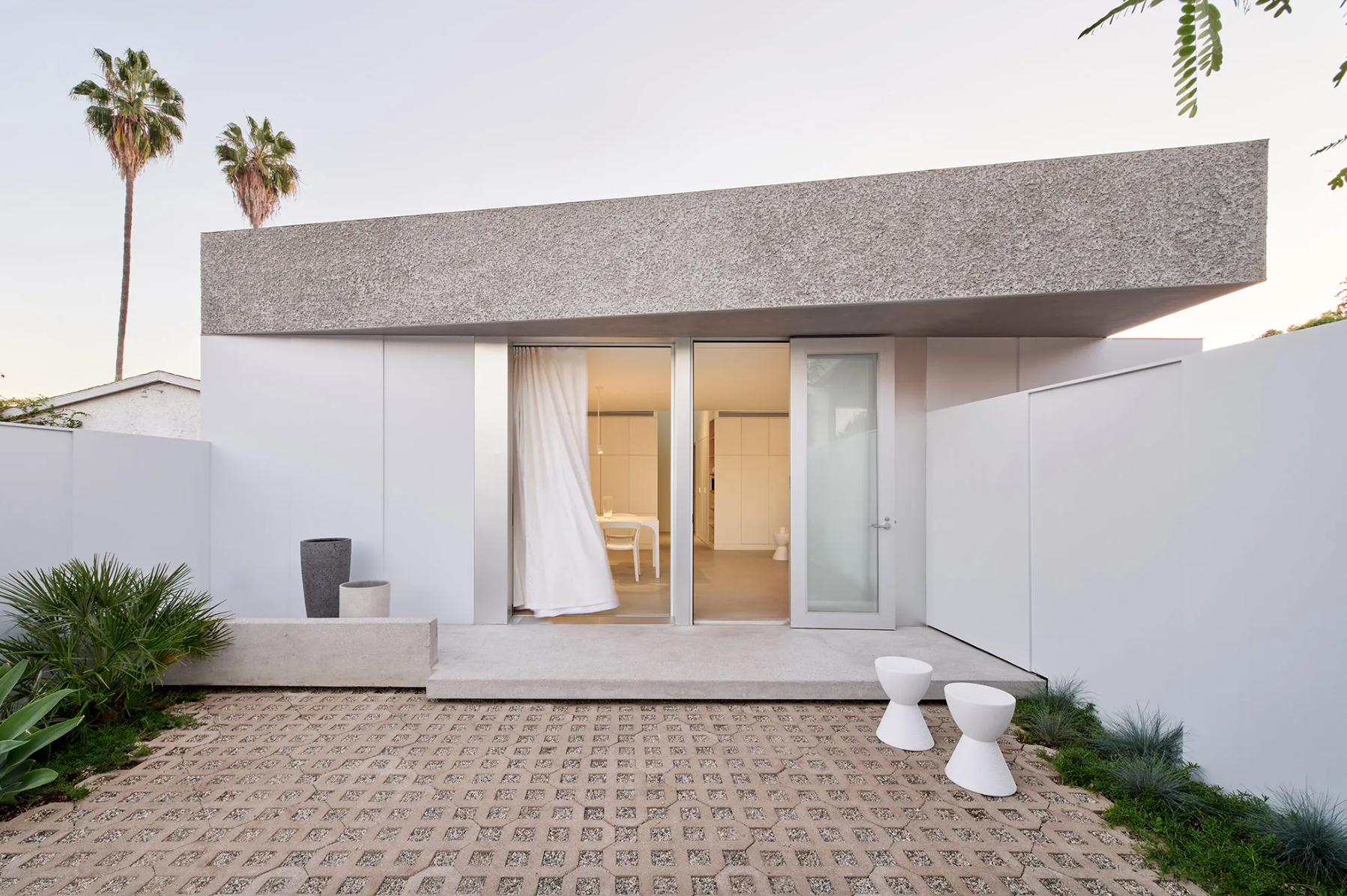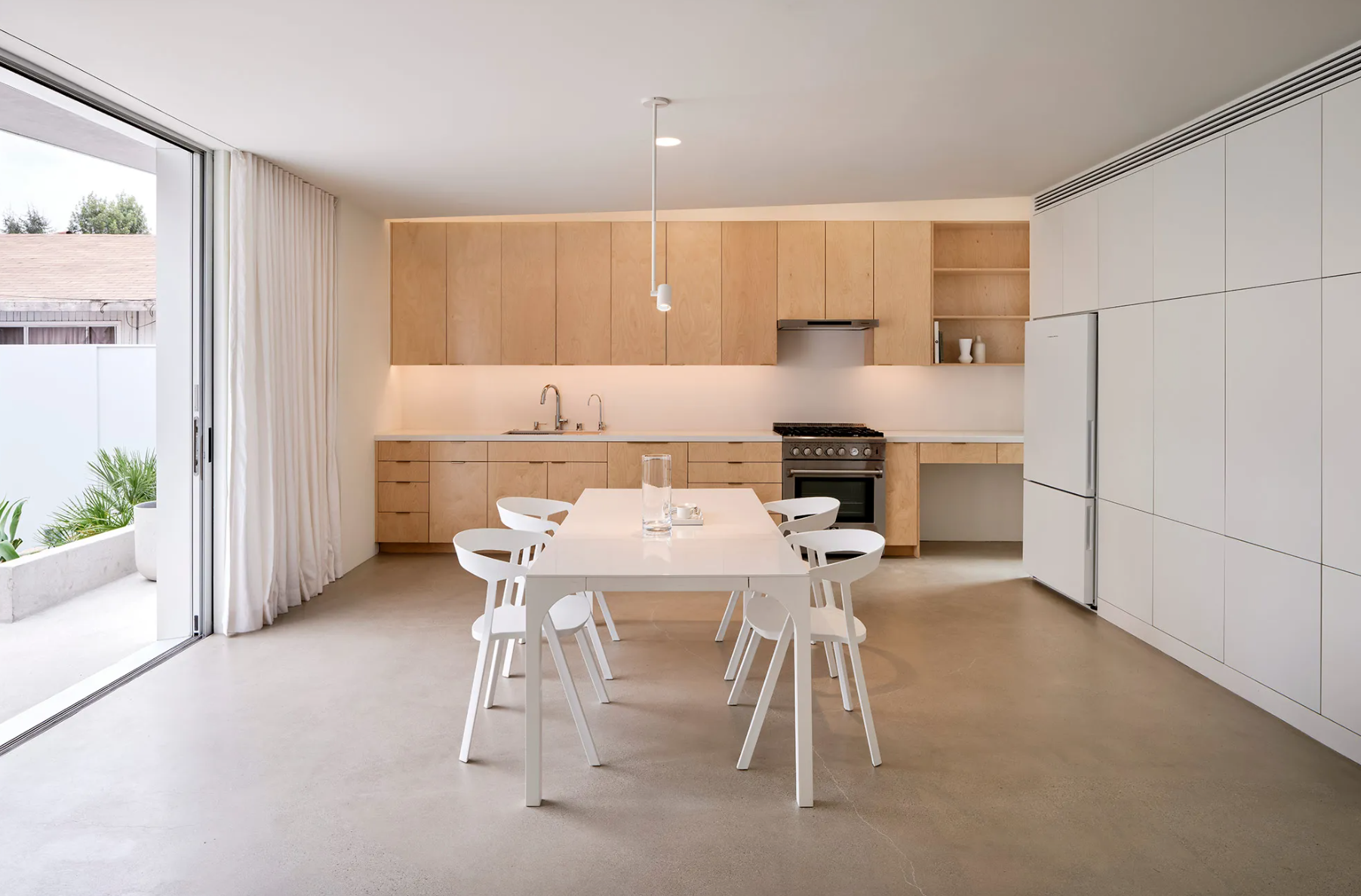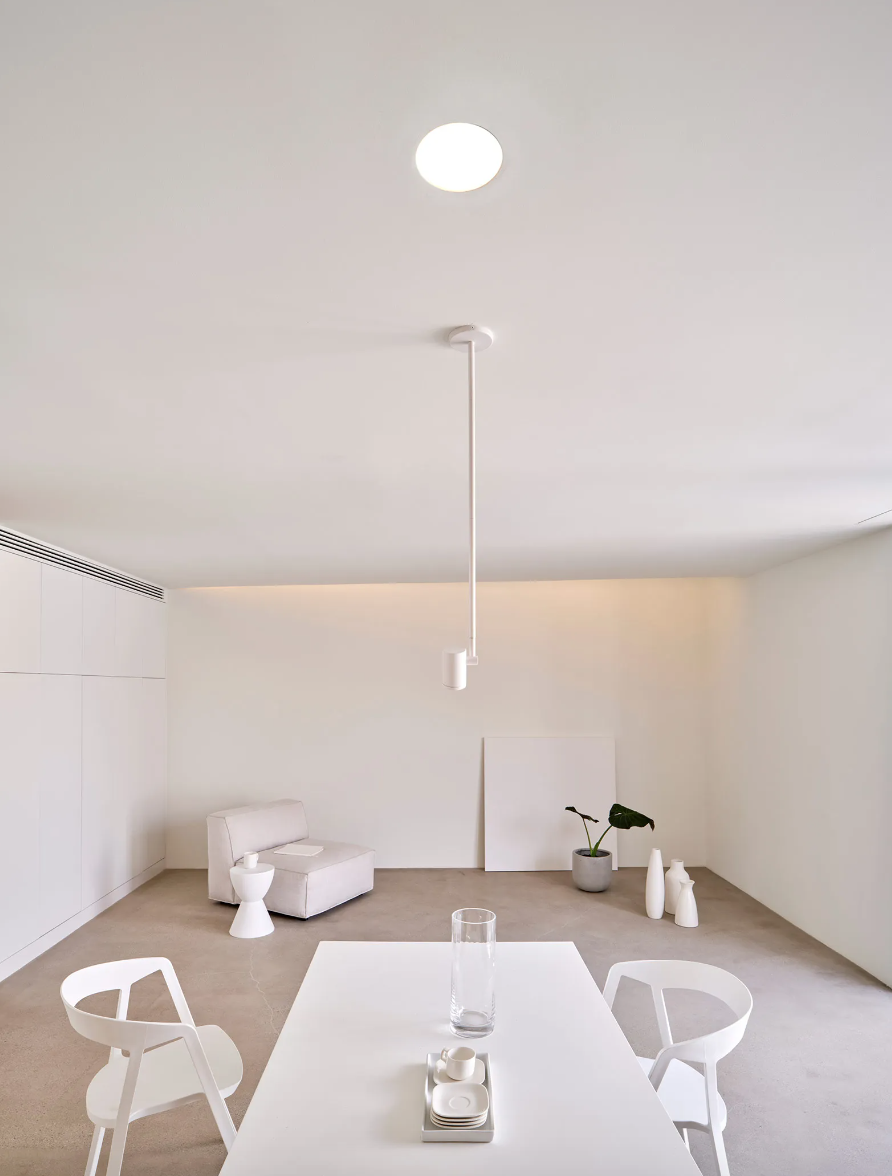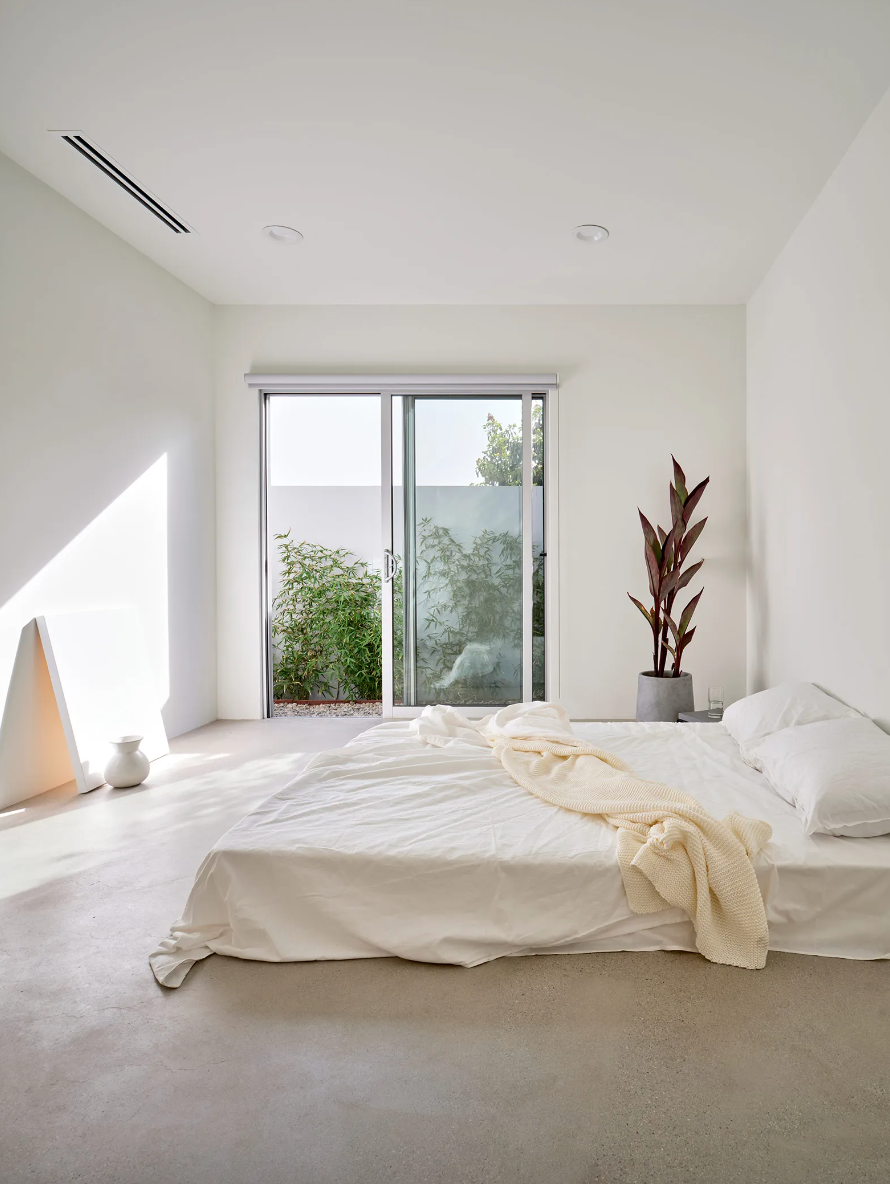Main Content
Blog
Blog Details
Rethinking The ADU: Functional And Independent Living Spaces
In a bustling urban landscape like Los Angeles, the concept of an Accessory Dwelling Unit (ADU) is being reimagined. Designs are challenging the traditional notion of ADUs as secondary or subordinate structures by prioritizing their potential as independent living spaces with unique architectural identities. A recent project in California encapsulates this shift, demonstrating how ADUs can be both functional and aesthetically enriching, particularly when intended for use as rental units.
Innovative Design Solutions

Strategic Location and Pathway Design: Located at the rear end of the property, this ADU transforms the long driveway into a dual-purpose space – a parking area for the main house and a welcoming walkway for tenants. A gravel path, gate, and front garden create a sense of entering a distinct, personal space. The location further inside the lot offers tenants a deeper and more enjoyable street view.

Privacy and Aesthetic Integration: Privacy was a key consideration. To avoid overlooking into each other’s backyards, the design strategically excludes windows in certain directions. An oversized skylight in the hallway introduces natural light and ambiance. To compensate for the loss of garage storage space in many ADU conversions, an additional 50 square feet of storage space was allocated to the existing house.

Building Identity through Materiality: The ADU’s identity is further defined through its material palette and form. The use of “Jongseok Mijang,” a traditional Korean building technique, lends a unique texture to the walls. This method, involving scraping a cement/gravel mixture, results in a robust finish with energy-efficient properties. The contrast between the rugged cement/gravel and the smooth white panels and aluminum finishes creates a striking visual dialogue. The use of Turfstone pavers complements this aesthetic while also providing environmental benefits.

Interior Design: Inside, the use of white and light birch plywood expands the perceived space, creating a bright and inviting interior. The integration of skylights and strategic window placement ensures privacy while bathing the space in natural light, making it an appealing canvas for tenants to personalize.
Sustainability Features
The project’s sustainability is highlighted by the thermal mass properties of the “Jongseok Mijang” walls, which naturally regulate indoor temperature, reducing the reliance on mechanical heating and cooling systems. This feature, along with the permeable Turfstone paving, underscores the project’s commitment to environmentally responsible design.
Text by Yeh-Yeh-Yeh Architects | Photo by Brandon Shigeta | Read More Here



Login With
Or Sign Up With Disqus